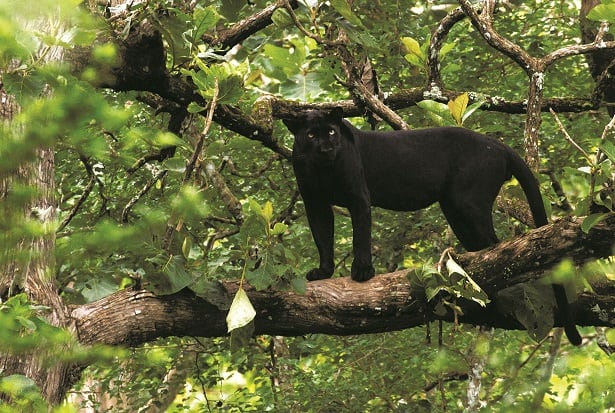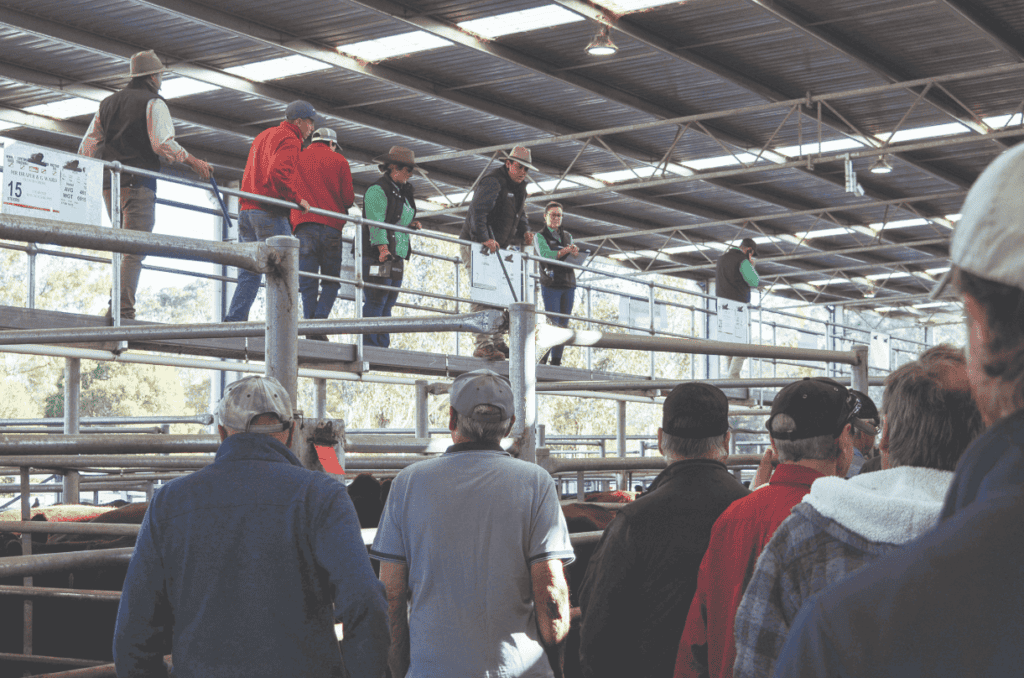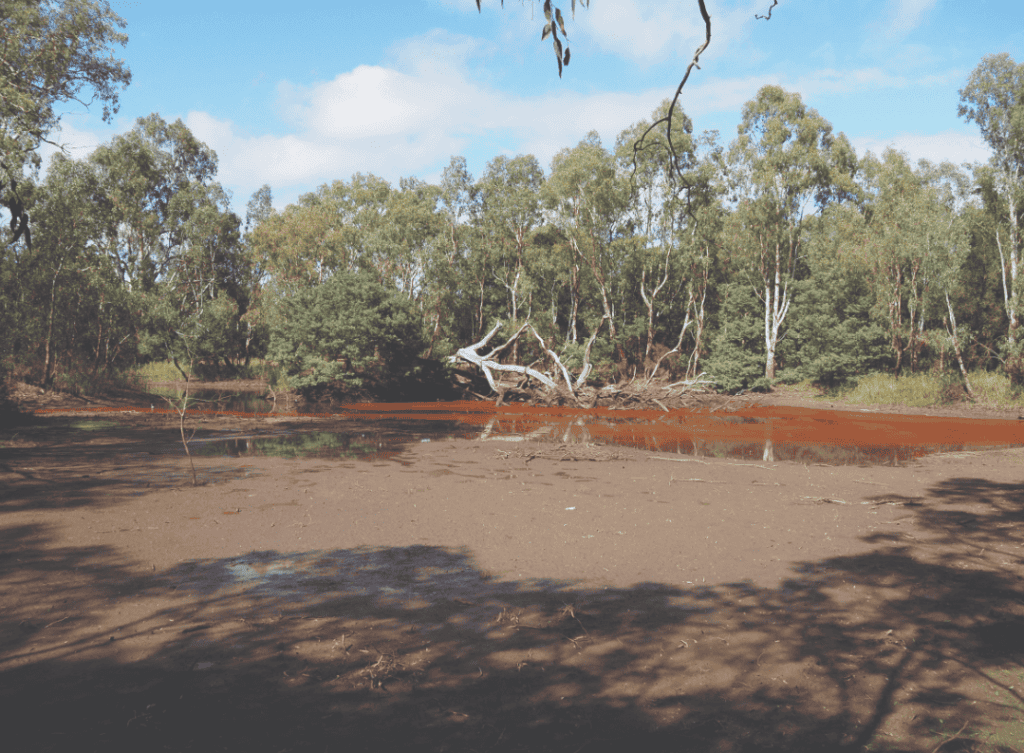News Article
Are there really big cats in Australia?

Want to read more articles like these?
Photo: A black panther in India by David V Raju
BIG cat researcher Bernard Mace from Toolangi became interested in whether big cats are in the Australian wilderness at a very young age.
His father was a bomber command veteran from World War II and had witnessed pumas being brought into the country by US soldiers when at a training station in South Australia.
Bernard explained, “He didn’t know what became of them because he went off to war.”
The puma story aroused Bernard’s interest “as a young fella” and “Low and behold, there were reports happening from time to time. A western district paper would write a report on a puma sighting or something near the Grampians and it just slowly built up over the years.”
Bernard started a scientific research career in Tasmania in the field of metallurgy, and this has been his career throughout his life. He also maintained his interest in biology, reading everything he could get his hands on, from the time he was a small child, through until now.
He maintained his interest in big cats and started keeping notes. He teamed up with a few people and formed a group that were prepared to act on reports and follow up. He developed a habit where if someone called in with a story, he’d interview them and go to the spot with them.
“Clearly, there was a job to be done in identifying the species for a start. It was not politically correct to say that we’ve got panthers or pumas running around Australia. For fairly complex reasons, the authorities have always treated it that way, but the eye witness accounts were saying something different.”
He began to wonder about the implications of the big cat sightings, and what they might mean for native wildlife. They would be an advanced feline predator in a marsupial environment and could be very damaging. Wombats and wallabies would be very easy food for them. In areas where there have been reports of big cats, Bernard has also noted that there’s been a decline in wombat numbers, and many wallaby carcasses which appear to have been killed by a large predator. There tends to be an ingress into the rib cage where whatever is chasing them is after the soft tissue.
He’s received many reports of big cats around the central highlands area, including Mansfield, Warburton, Healesville, Toolangi and Yarra Ranges. He estimated that around six sightings come in from Toolangi each year, from the Black Range and Chum Creek area. The Grampians is also a hot spot. In the reports, the colours of the cats include black, grey, taupe and brown. There may be a variety of populations.
In addition to the idea that the American forces bought in mascots during World War II, it’s also possible that circuses and zoos may have released animals, either accidentally or deliberately.
“When you knock on doors in areas with a high incidence of big cat reports, you hear things like people having private zoos. It was a fairly under-regulated place in the early days,” Bernard said.
He heard about a small zoo in the Dandenongs which was burnt out during the 1939 fires, and whoever owned it turned the animals loose rather than seeing them burn. This included lions and leopards.
Bernard has had several big cat sightings, but hasn’t had “a brilliant view.” He saw one close to the Dandenongs one night when spotlighting and trying to establish whether they were in the area.
He had “a peculiar eye shine and the animal ran past and stood in a patch of bracken. It was a sandy-coloured cat and it was taller than the bracken. It had a quite heavy body. It turned and loped away,” he said. Unfortunately, the sighting didn’t give enough detail to be 100 per cent certain, however he said it would be hard to attribute to anything other than a mountain lion, a puma.
“If there was a lottery, I’d be putting money on the puma being a major component of our new exotic big cats,” he said.
“I would say that the puma is going to be authenticated as a new immigrant species in Australia, naturalised and we’ll have to live with the consequences.”
When Bernard started looking into big cat sightings, few people carried cameras, but now most people are at least carrying a mobile phone, and dash cams are proliferating, along with trail cams. He suspects that definitive proof won’t be far away. “Sooner or later, someone’s going to get the perfect diagnostic bit of footage,” he said.
Have you seen a big cat? You can contact Bernard Mac on bernardmace313@gmail.com or phone 0425 732 121. The Alexandra Standard would also be interested in publishing your sighting. Email editorial@alexandranewspapers.com.au and note whether you would like your sighting to be anonymous.
Some big cat sightings
Male Buxton
I’ve seen one at Bakers Creek in Merrijig and another one at Tolmie. It was about the size of a German short-haired pointer. A bit bigger. Alsatian size. I’ve also seen footprints on Conns Gap Road at Snobs Creek. When we walked in, they were across the road.
Female Marysville
I was up at Lady Talbot Drive, near the meeting of the waters, and I saw a black animal walking across a tree trunk that had fallen across the river. It looked too large for a wild cat, but I only had a fleeting image of it. It was definitely a cat of some description, but it looked too large for a feral domestic cat. I would say it looked about Labrador size.
Male Marysville
I saw one on the Toolangi Road. I was driving around the corner and I saw something go up the tree at a rapid rate of knots. It was very dark coloured, and then when I stopped I heard like a slight growl but I couldn’t see it.
Male Granton
In October, I was driving down the Lake Mountain Road at about the 5km mark and I saw a big black cat run across the road. It would have been 30kg in size. It was in a hurry when it saw me. It went up through the bush and disappeared. It would have been the size of a kelpie or dingo. It was definitely not a little cat. It was a bigger cat. I reckon it was a halfie. It was pitch black.
Female Marysville
I saw one 17 years ago, in the City of Casey, in the wetlands. There was a large cat, massive, in front of my headlights. It was coming out of a paddock where there had been two horses, running into the wetlands. At the time, I asked the local farmers and they had had some killings of livestock, and they were amazed at the way the livestock had been killed. It was bigger than a Labrador or wolfhound. When you’ve seen one, you know how big they are.
Female Marysville
I was travelling along Jamieson-Eildon Road in winter this year as the passenger in a car. We went over the crest of a hill and saw that there was an animal on the road. As we got closer, both the driver and I saw that it was a panther or puma. It was completely black with a long tail. It was about the size of a wolfhound. It was massive. We got a very clear view as it was standing in the middle of the road. It stared at us for a few seconds and then walked off into the bush. We went back a couple of months later, and I caught a fleeting glimpse of it again, very close to the same location.
Male Marysville
“Before the bushfires, we used to see this cat quick often down the paddock. She’d just walk away from you. There was nothing after the fires, but walking around in the mud the other day, there was a big paw mark. It was as big as my hand. When we looked around a bit further, there were small paw marks, meaning she had a cub with her. She’s not aggressive. She never touches the cattle. When she does see you, she just walks away.”
He has the irrigation rights from the Taggerty River, and when he checked on the pipes, every now and then he’d look up and she was up the channel. He estimated that it was the size of an Alsatian, with legs not quite as long, and very black.
He spoke about a walker he knew who came face to face with a panther on a track. Fortunately, the creature moved away.
“They’ve been here for quite some time,” he said. “It’s just part of the environment here. We’ve got plenty of wombats it can have.”
“Several people made a comment that after the bushfires, she was seen out near the Cathedral Range for quite a while as it wasn’t badly hit in the fires. She’s come back up this way.”
The last time he saw the cat was in August.
...continue reading the full article by subscribing to our weekly, monthly or annual subscription here.
If you see a photo in the paper of your child, grandchild, partner, or friend we can supply you with a copy to put on your wall as long as Alexandra Newspapers took the photo (we cannot provide a copy of a photo that was taken by a third party).
Alexandra Newspapers is proud to distribute our two primary publications through newsagents, supermarkets, petrol stations and many other outlets across the Murrindindi Shire and beyond.
Alexandra Newspapers offers display and classified advertisements as well the ability to promote your business. Both the Alexandra Standard and the Yea Chronicle offer classified ads for: Births, Deaths, Marriages, Situations Vacant, For Sale, Garage Sale, In Memoriam, Happy Birthday, Anniversary, Public Notice, Meetings, Automotive, Car/Caravan/Motorbikes/Boats. For Rent/Lease, and Wanted.
Alexandra Newspapers can provide commercial printing of plans, posters, business stationery, invoice and receipt books, self-inking stamps and more. Reach out to us for any commercial printing jobs here.
Grab a copy of the weekly newspaper or reach out to us here for subscribing an offline newspaper copy.
Like, comment and share the article on your facebook page.
Want to read more articles like these?

Services
Newspapers
© 2020 - 2025. ALEXANDRA NEWSPAPERS. All rights reserved.
Privacy Policy | Terms of Use | Sitemap
Website built with ❤ by Regional Business Toolkit


